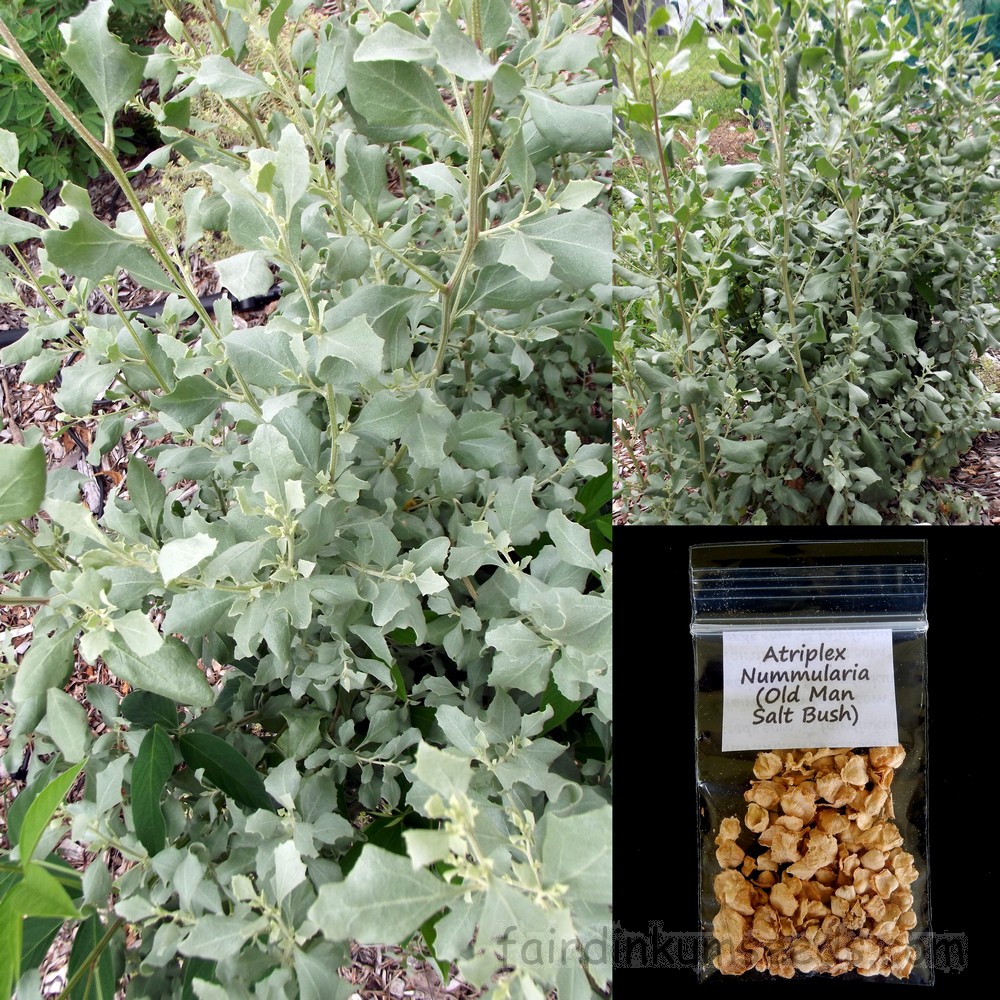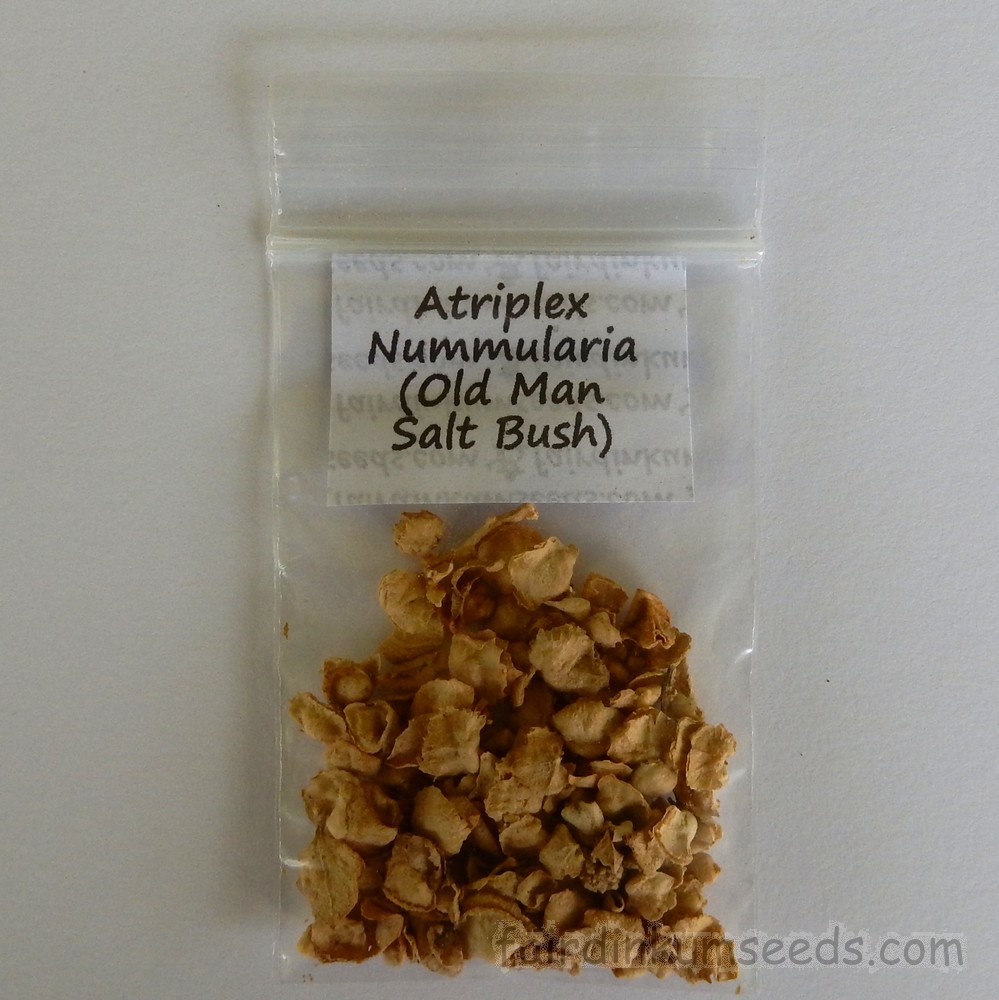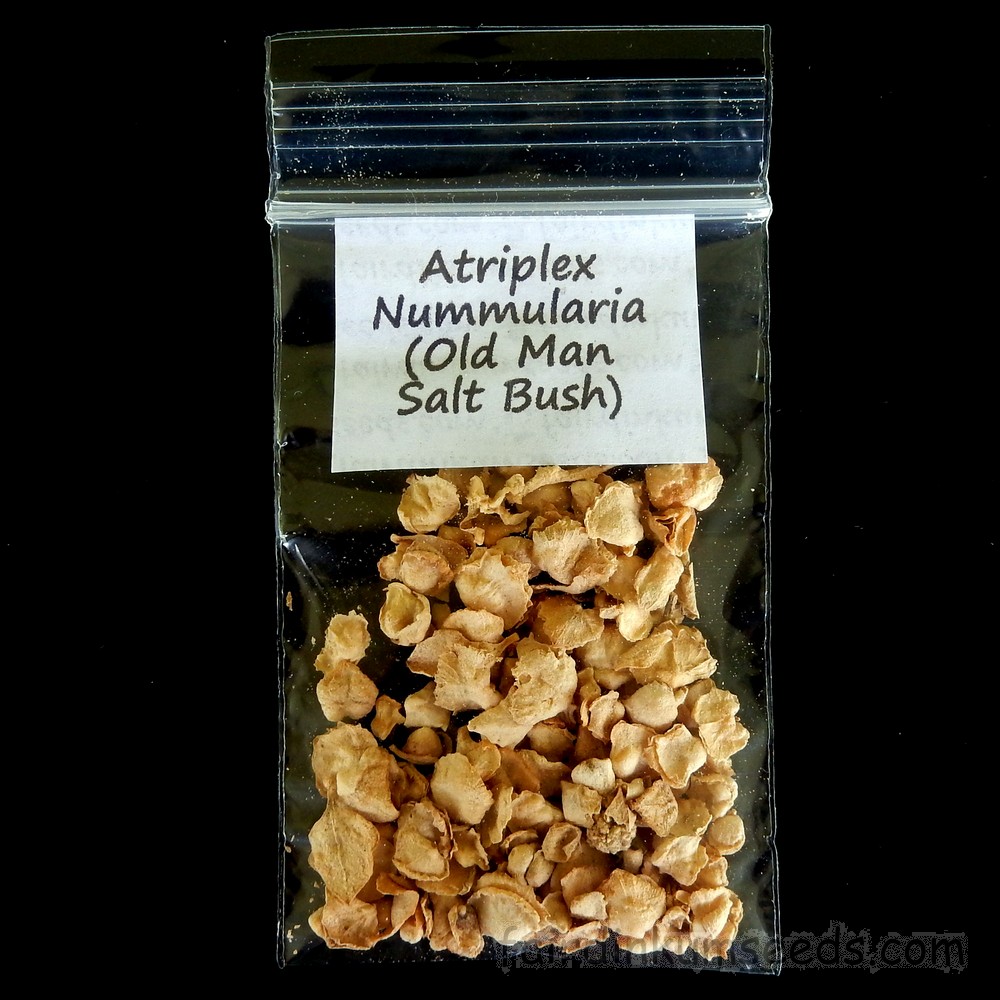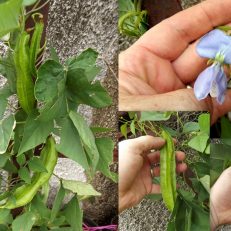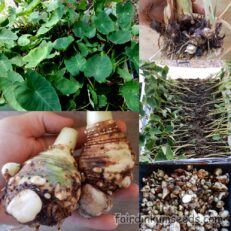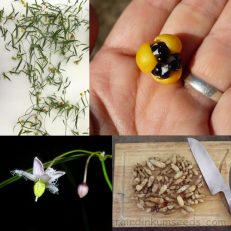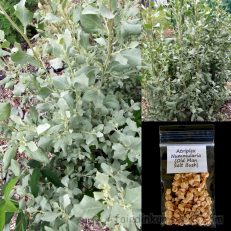Please read text!
Atriplex Nummularia Old Man Salt Bush Seeds
Packet of 50+ seeds still in the dried fruit!
This irregular shaped fruit is the source of its name, as the “nummularia” bit comes from “nummus”, which meaning coin.
I guess it is kind of flat, silver, and rounded, sort of, especially if you squint a bit...
The “Atriplex” bit makes a lot more sense as that bit comes from the Latin “atriplexum” or orache, which is a species commonly used as a substitute for spinach.
All 250+ of the Atriplex mob worldwide are edible in one way or another, and this fella in particular has been used for millennia by the Australian Aborigines, the settlers took advantage of it, and we continue to use it pretty extensively today.
It is Australia’s largest growing Saltbush, and has the very recognizable common name of Old Man Salt Bush or Oldman Saltbush depending on who does the writing.
In the wild it gets 3m x 3m easy in good conditions, but here I just keep them trimmed to dense little hedges.
If you have ever bought a spice blend, marinade, flavoured salt, herb rub or “bush tucker blend” of pretty much anything, then this was the number one main ingredient, the salty, herby, tasty bit, that made the rest taste good.
Especially good at off-setting our stronger, very sour flavoured bush fruits.
We grow and wild harvest heaps here in Australia, both as a culinary delight, and as an animal fodder, especially out west in the flood plains and arid regions.
It can handle really heavy grazing or pruning, short term flooding, drought, high temperatures, salty saline soils, even heavy frosts.
This fella is tough as nails!
It is native to Queensland, New South Wales, South Australia and Victoria, and traditionally the leaves were used in cooking to add some salty, herby, oumph, while the pounded or roasted seed were used in breads and damper.
It does thrive in harsh conditions and poor salty soils where traditional crops would struggle or die, but that said, it does great in good fertile soils and more sensible temperatures too.
It is easy to grow, but because the seeds are still in the fruit, it is a good idea to soak them in water over night, and give them a quick gentle rub in your hands before planting.
The fruit softens, and allows the seed inside to soak water and germination to begin.
Now you don’t need to, just takes a little longer to germinate and its a bit more erratic if you don’t.
2-6weeks is the normal germination time for me here without a soak and a rub.
It is a bit quicker at 1-4weeks with a soak, but not really a huge difference I guess.
Once the plants are up you may like to cut off the top at about knee high. This promotes branching and more branches means more leaves and tighter more productive plants.
I cut them, then dry and powder the leaves, using it as a rub on meats before roasting or frying, or I mix a decent pinch of the powdered leaf in with bread or pizza dough for a bit of something different.
Stores forever and if you continue to cut the top off your plants every inch or so of growth in no time you will have more than you could ever use.
When that happens you can cut branches as food for your guinea pigs, chickens, cattle etc.
Great stuff, and easy to grow pretty much anywhere.
Grown by me and the Mrs organically, no chems, no nasties, no problems!!!
